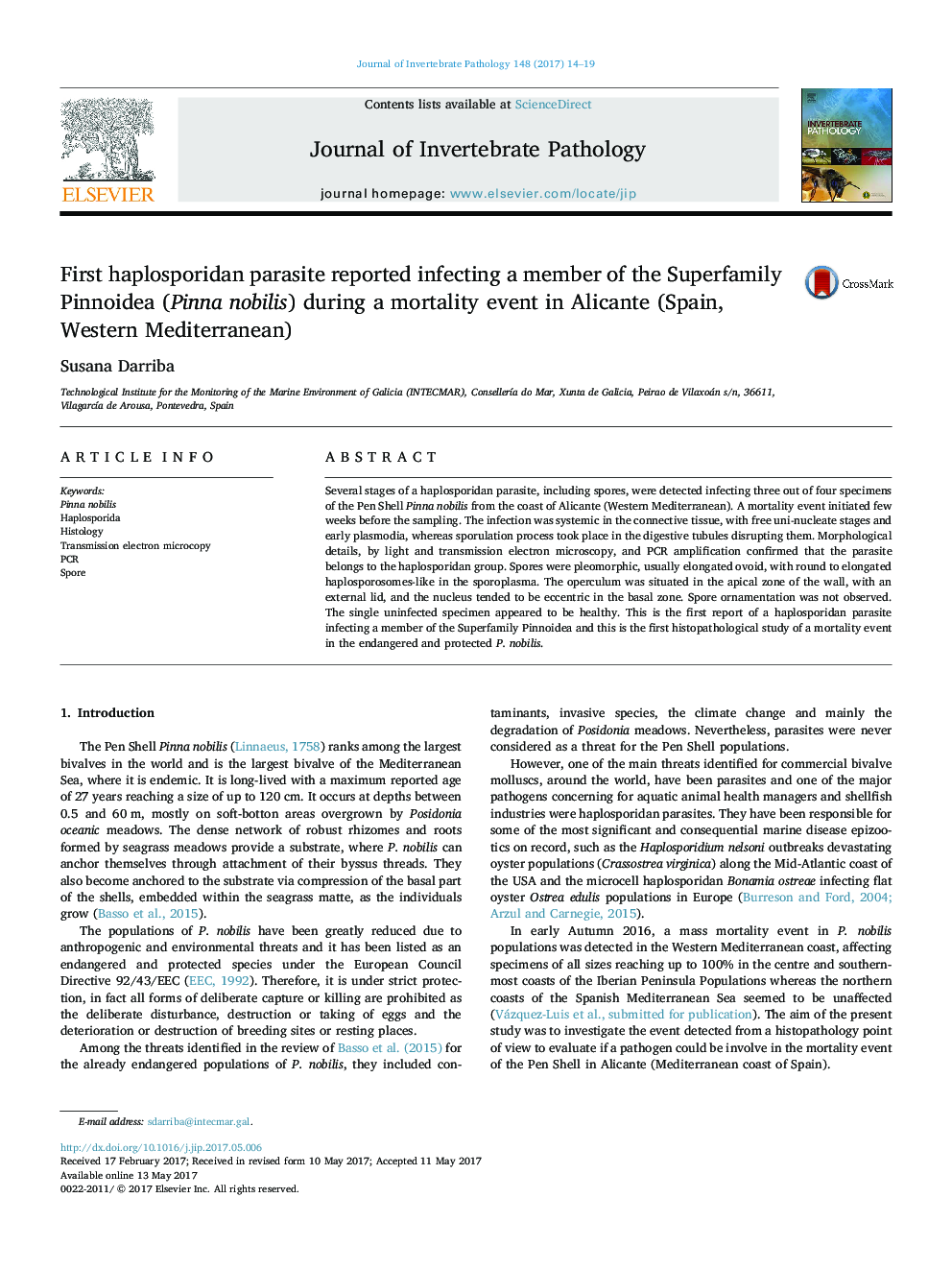| کد مقاله | کد نشریه | سال انتشار | مقاله انگلیسی | نسخه تمام متن |
|---|---|---|---|---|
| 5767018 | 1628204 | 2017 | 6 صفحه PDF | دانلود رایگان |

- A haplosporidan parasite is reported for first time infecting Pinnoidea.
- The infection is systemic in connective tissue with extracellular stages.
- Sporulation takes place in digestive tubules disrupting them.
- Parasites are a new threat for the endangered and protected Pinna nobilis.
Several stages of a haplosporidan parasite, including spores, were detected infecting three out of four specimens of the Pen Shell Pinna nobilis from the coast of Alicante (Western Mediterranean). A mortality event initiated few weeks before the sampling. The infection was systemic in the connective tissue, with free uni-nucleate stages and early plasmodia, whereas sporulation process took place in the digestive tubules disrupting them. Morphological details, by light and transmission electron microscopy, and PCR amplification confirmed that the parasite belongs to the haplosporidan group. Spores were pleomorphic, usually elongated ovoid, with round to elongated haplosporosomes-like in the sporoplasma. The operculum was situated in the apical zone of the wall, with an external lid, and the nucleus tended to be eccentric in the basal zone. Spore ornamentation was not observed. The single uninfected specimen appeared to be healthy. This is the first report of a haplosporidan parasite infecting a member of the Superfamily Pinnoidea and this is the first histopathological study of a mortality event in the endangered and protected P. nobilis.
281
Journal: Journal of Invertebrate Pathology - Volume 148, September 2017, Pages 14-19